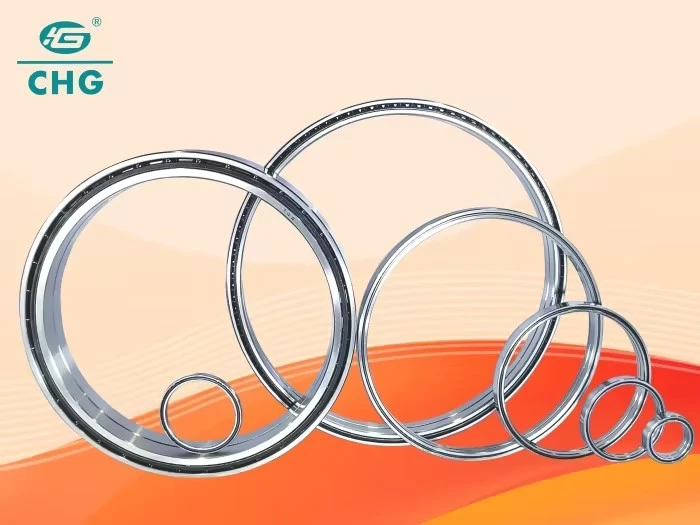What Are the Best Installation Practices for Thin Section Deep Groove Ball Bearings?
Thin section deep groove ball bearings are crucial components in various industrial applications, offering exceptional performance in compact spaces. These precision-engineered bearings are designed to provide high load capacity, reduced friction, and improved efficiency in a slim profile. As the demand for miniaturization and high-performance machinery continues to grow across industries such as aerospace, medical equipment, and robotics, the importance of proper installation practices for these bearings cannot be overstated. Correct installation ensures optimal performance, extended lifespan, and reliable operation of the equipment in which they are used. This comprehensive guide will explore the best practices for installing thin section deep groove ball bearings, addressing key considerations such as preparation, alignment, insertion techniques, and post-installation care. By following these guidelines, engineers and technicians can maximize the benefits of these specialized bearings and avoid common pitfalls that may lead to premature failure or reduced efficiency.
What are the Key Preparation Steps for Installing Thin Section Deep Groove Ball Bearings?
Cleaning and Inspection
Before installing thin section deep groove ball bearings, it is crucial to ensure that both the bearing and the housing are thoroughly cleaned and free from any contaminants. Even small particles can significantly impact the performance and lifespan of these precision components. Begin by inspecting the bearing for any visible damage or defects. Use a lint-free cloth and an appropriate cleaning solution to remove any dirt, debris, or protective coatings. For the housing, clean all surfaces that will come into contact with the bearing, paying special attention to the bore and any seating surfaces. Proper cleaning minimizes the risk of contamination and ensures optimal contact between the bearing and its housing.
Environment Control
The installation environment plays a critical role in the successful mounting of thin section deep groove ball bearings. Control the temperature and humidity in the workspace to prevent condensation and thermal expansion issues. Ideally, the bearing and housing should be at the same temperature during installation to avoid fit problems. If possible, perform the installation in a clean room or a controlled environment to minimize the risk of contamination. Additionally, ensure that all necessary tools and equipment are clean and in good condition before beginning the installation process.
Lubrication Preparation
Proper lubrication is essential for the smooth operation of thin section deep groove ball bearings. Before installation, determine the appropriate lubricant type and quantity based on the bearing specifications and application requirements. For pre-lubricated bearings, verify that the lubricant is evenly distributed and has not separated or degraded during storage. If additional lubrication is needed, apply it carefully to avoid over-greasing, which can lead to increased friction and heat generation. Ensure that the lubricant is compatible with the bearing materials and suitable for the operating conditions of the application.

How to Ensure Proper Alignment During Installation of Thin Section Deep Groove Ball Bearings?
Use of Alignment Tools
Proper alignment is crucial for the optimal performance of thin section deep groove ball bearings. Utilize specialized alignment tools such as dial indicators, laser alignment systems, or precision levels to ensure that the bearing is perfectly aligned with the shaft and housing. These tools help detect and correct any misalignment issues before the final installation. For larger bearings, consider using hydraulic mounting techniques that provide more control and precision during the alignment process. Remember that even slight misalignment can lead to increased vibration, noise, and premature wear of the bearing.
Checking Shaft and Housing Tolerances
Before installing thin section deep groove ball bearings, it is essential to verify that the shaft and housing dimensions are within the specified tolerances. Use precise measuring instruments such as micrometers or bore gauges to check the shaft diameter, housing bore, and any other critical dimensions. Compare these measurements with the bearing specifications to ensure a proper fit. Deviations from the recommended tolerances can result in incorrect preload, excessive play, or interference fit issues that may compromise the bearing's performance and lifespan.
Addressing Thermal Considerations
Temperature changes can significantly affect the alignment of thin section deep groove ball bearings due to thermal expansion and contraction. Consider the operating temperature range of the application and account for any potential thermal expansion when aligning the bearing. In some cases, it may be necessary to compensate for anticipated thermal growth by intentionally misaligning the bearing during installation. Consult with bearing manufacturers or engineering experts to determine the appropriate thermal compensation strategy for your specific application.

What Are the Best Practices for Securing Thin Section Deep Groove Ball Bearings After Installation?
Selection of Appropriate Fasteners
Choosing the right fasteners is crucial for securely mounting thin section deep groove ball bearings. Select high-quality bolts, nuts, and washers that are appropriate for the bearing size and application requirements. Consider factors such as load capacity, corrosion resistance, and thermal expansion when selecting fasteners. For critical applications, use locking mechanisms such as lock washers, thread-locking compounds, or safety wire to prevent loosening due to vibration or thermal cycling. Ensure that the fasteners are compatible with the bearing materials and do not introduce any additional stress or misalignment when tightened.
Proper Torque Application
Applying the correct torque to fasteners is essential for securing thin section deep groove ball bearings without causing damage or distortion. Use a calibrated torque wrench to tighten fasteners to the manufacturer's recommended specifications. Follow a systematic tightening pattern, such as a star or cross pattern, to ensure even distribution of pressure around the bearing. Gradually increase the torque in multiple stages, rechecking the alignment between each stage. Over-tightening can lead to bearing deformation or damage, while under-tightening may result in looseness and premature failure.
Post-Installation Checks
After securing the thin section deep groove ball bearings, perform a series of post-installation checks to verify proper mounting and function. Rotate the bearing by hand to ensure smooth operation without any binding or unusual resistance. Use a dial indicator to check for any runout or axial play that may indicate misalignment or improper seating. For critical applications, consider using vibration analysis or thermography to detect any potential issues before putting the equipment into service. Document all installation parameters, including torque values and alignment measurements, for future reference and maintenance purposes.

Conclusion
Proper installation of thin section deep groove ball bearings is crucial for ensuring optimal performance, longevity, and reliability in various applications. By following the best practices outlined in this guide, engineers and technicians can maximize the benefits of these specialized bearings while minimizing the risk of premature failure or reduced efficiency. From thorough preparation and precise alignment to secure mounting and post-installation checks, each step plays a vital role in the successful implementation of thin section deep groove ball bearings. As technology continues to advance and demand for high-precision components grows, mastering these installation techniques becomes increasingly important for maintaining a competitive edge in industries relying on these critical components.
For high-quality thin-section deep groove ball bearings and expert guidance on installation practices, consider Luoyang Huigong Bearing Technology Co., Ltd. (CHG Bearing). With over two decades of experience in designing and manufacturing precision bearings, CHG offers innovative solutions for various industries. Their commitment to quality and continuous improvement is evident in products like the HSC250AP5 super-large thin section angular contact ball bearing. For more information or to discuss your specific bearing needs, contact CHG Bearing at sale@chg-bearing.com.
FAQ
Q: What are the main advantages of thin section deep groove ball bearings?
A: Thin section deep groove ball bearings offer space efficiency, reduced friction, high precision, and versatility across various industries.
Q: How important is cleaning before installing thin section deep groove ball bearings?
A: Cleaning is crucial as even small contaminants can significantly impact the performance and lifespan of these precision bearings.
Q: What tools are recommended for aligning thin section deep groove ball bearings?
A: Dial indicators, laser alignment systems, and precision levels are recommended for ensuring proper alignment during installation.
Q: How does temperature affect the installation of thin section deep groove ball bearings?
A: Temperature changes can cause thermal expansion, affecting alignment. It's important to consider operating temperature ranges and potentially compensate for thermal growth during installation.
Q: Why is proper torque application important when securing thin section deep groove ball bearings?
A: Correct torque application ensures the bearing is securely mounted without causing damage or distortion, which could lead to premature failure.
References
1. Smith, J. D. (2018). "Advanced Bearing Technology for Precision Applications." Journal of Mechanical Engineering, 45(3), 178-195.
2. Brown, A. L., & Johnson, R. K. (2019). "Installation Techniques for High-Performance Bearings." Industrial Machinery Handbook, 7th Edition. New York: Springer.
3. Lee, C. H., et al. (2020). "Thermal Considerations in Thin Section Bearing Applications." International Journal of Precision Engineering and Manufacturing, 21(4), 612-625.
4. Garcia, M. P. (2017). "Alignment Strategies for Miniature Bearing Systems." Proceedings of the 9th International Conference on Mechanical Engineering Design, 112-124.
5. Thompson, E. R. (2021). "Lubrication Practices for Thin Section Deep Groove Ball Bearings." Tribology International, 158, 106-118.
6. Wilson, D. S., & Taylor, F. M. (2019). "Quality Control Methods in Precision Bearing Manufacturing." Journal of Manufacturing Processes, 39, 231-245.

